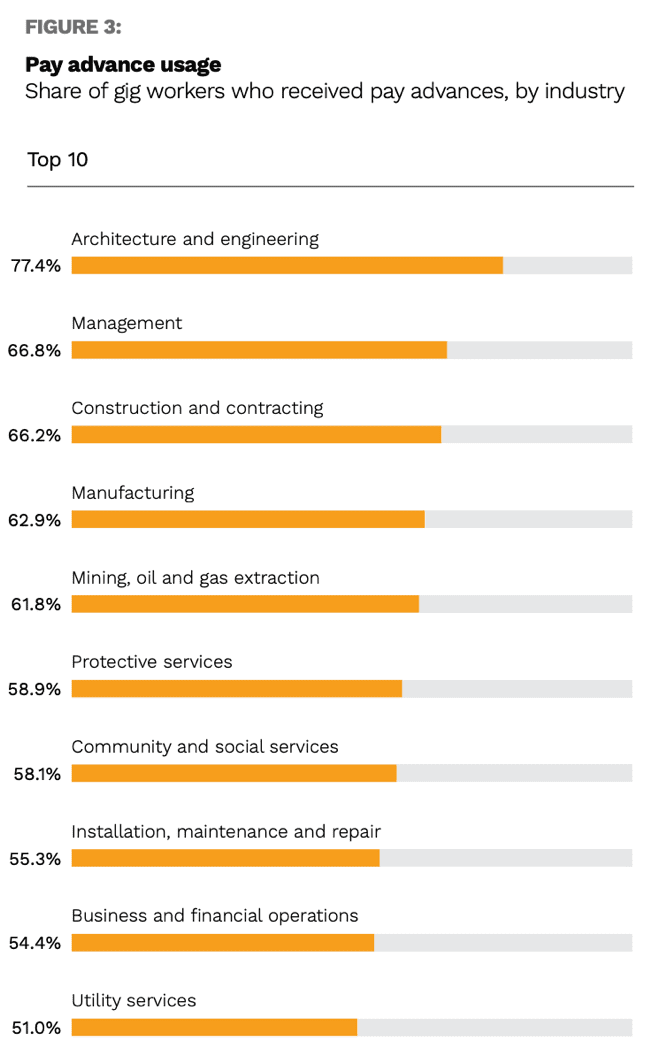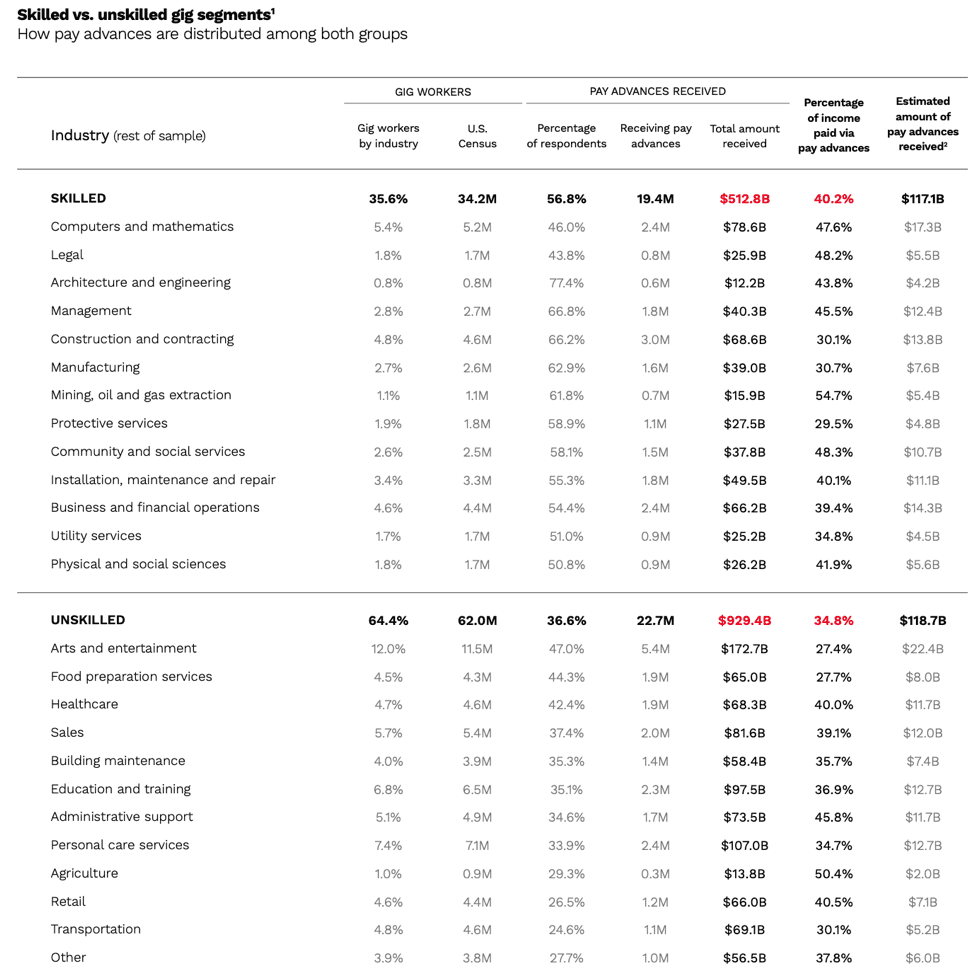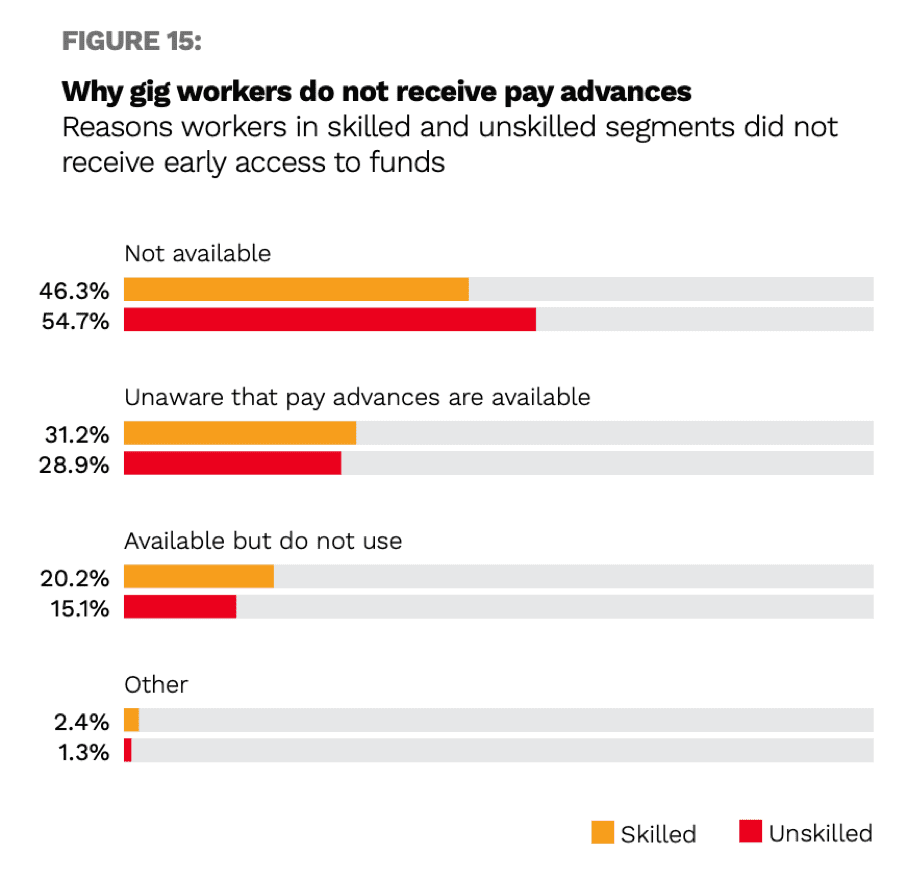
In the gig economy, early payment—not just ease or speed—can be a differentiator.
According to Pay Advances: The Gig Economy’s New Normal, employers disbursed $236 billion in full or partial payments before jobs were completed to 43.8 percent of United States-based gig workers last year.
The U.S. gig economy now comprises 38.7 percent of the nation’s workforce, 12.1 percent of whom perform ad hoc jobs on a full-time basis. This is changing the way workers receive payments, since gig workers aren’t paid on set schedules like traditional full-time employees.
“Gig worker” conjures up images of Uber drivers, Postmates delivery people or TaskRabbit movers. But in reality, gig jobs can encompass a wide range of work, both skilled and unskilled.
In the age of digital platforms, nearly no niche has gone underserved. Jyve launched earlier this year to connect gig economy workers with brick-and-mortar retailers. The idea behind this venture is that the rise in digital commerce will lead to a labor shortage in physical retail. Jyve aims to connect stores with workers who can stock products; input, pack and deliver product orders; and build in-store displays and audit shelving.
According to PYMNTS’ study, 1.2 million retail gig workers have received pay advances, totaling $66 billion — 40.5 percent of retail gig workers’ income.
Though retainers or deposits are commonplace in highly skilled industries, it hasn’t been the norm among gig workers, especially among unskilled industries like transportation and arts and entertainment.
This study looks at how the desire for pay advances differs by industry. One major finding was that gig workers are interested in pay advances, and a majority are willing to pay fees. Over half (64.4 percent) of gig workers would be willing to pay fees to access pay advances. Those who currently receive early access pay approximately $2.4 billion in annual fees, which would translate to another $1.8 billion in annual fee payments if all U.S. gig workers were able to access pay advances.
At first glance, it appears that certain professions receive pay advances in far greater numbers than others. For instance, architects and engineers lead in collecting them,
with 77.4 percent of gig workers in this field indicating they received pay advances. Industries that also receive pay advances in large numbers are management (66.8 percent), construction and contracting (66.2 percent) and manufacturing (62.9 percent).

Around one-quarter of retail gig workers (26.5 percent) and transportation workers (24.6 percent) have used pay advances.
These figures are slightly misleading, though, since gig workers disproportionately work in certain industries. While architecture and engineering appears to dominate pay advance activity, only 0.8 percent of architecture and engineering workers participate in the gig economy.
In contrast, 4.6 percent of gig workers are in retail, similar to the number in food preparation services (4.5 percent) and transportation (4.8 percent).
This represents a gap between unskilled and skilled workers. Gig workers in unskilled segments include cooks, retail associates and personal caregivers, and represent 64.4 percent of the gig economy. Workers in these sectors far outnumber those in this study’s skilled segments, which total 35.6 percent.
Workers in unskilled market segments received $118.7 billion in pay advances, and the projected market for unskilled workers to receive pay advances is $245.1, which reflects pent-up demand.
Arts and entertainment has one of the largest discrepancies between gig economy participation and the use of pay advances. Arts and entertainment workers are the largest participant in in the gig economy at 12 percent, but fewer than half (47 percent) have used a pay advance.

In the study, gig workers in unskilled segments are more likely to encounter obstacles when accessing pay advances than workers in skilled segments: 83.6 percent say they did not receive early access to pay because the service was unavailable or they were unaware that it existed.

Bottom line, gig workers are interested in pay advances, and a majority are willing to pay fees. That has major implications for unlocking additional revenue. There is an opportunity in enabling pay advances for the overall segment, as well as the retail industry, if the gig economy can overcome awareness and availability issues.